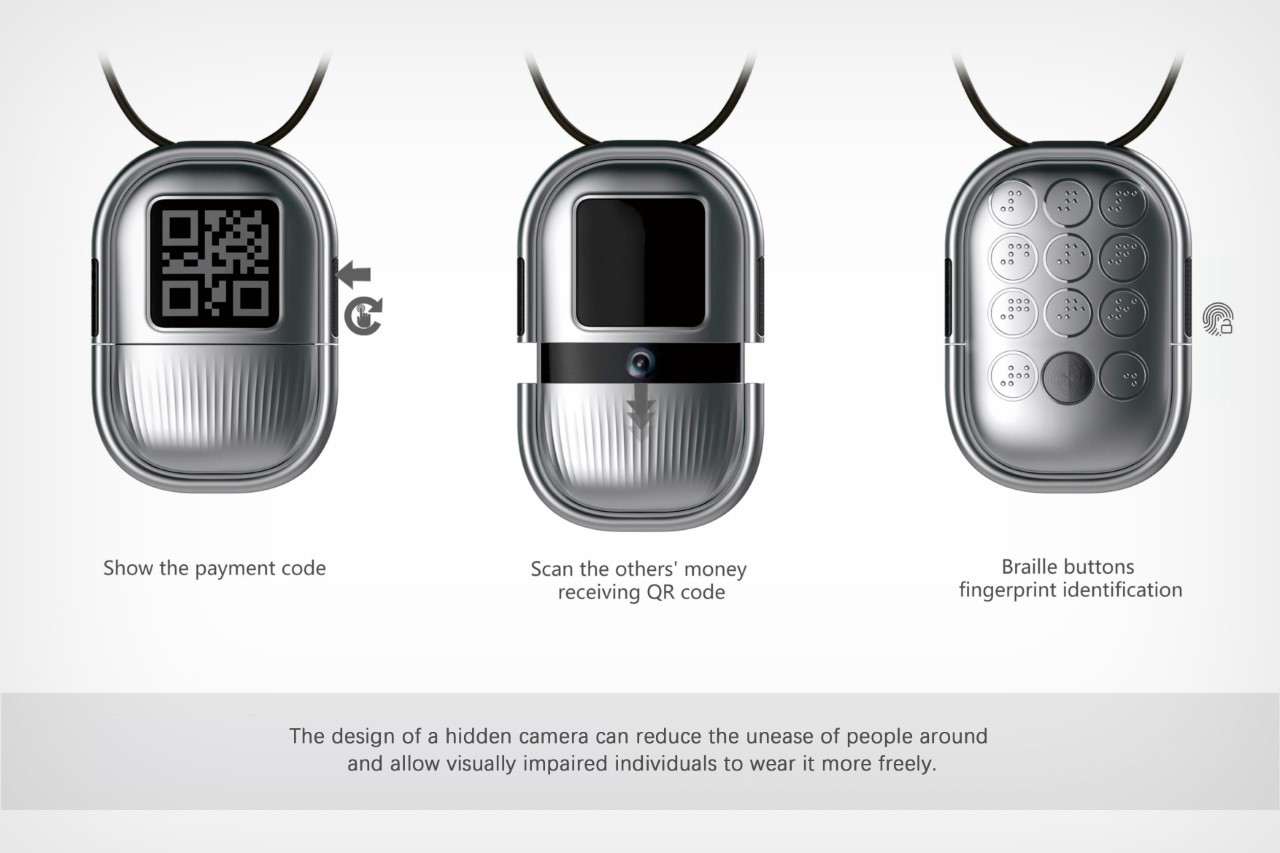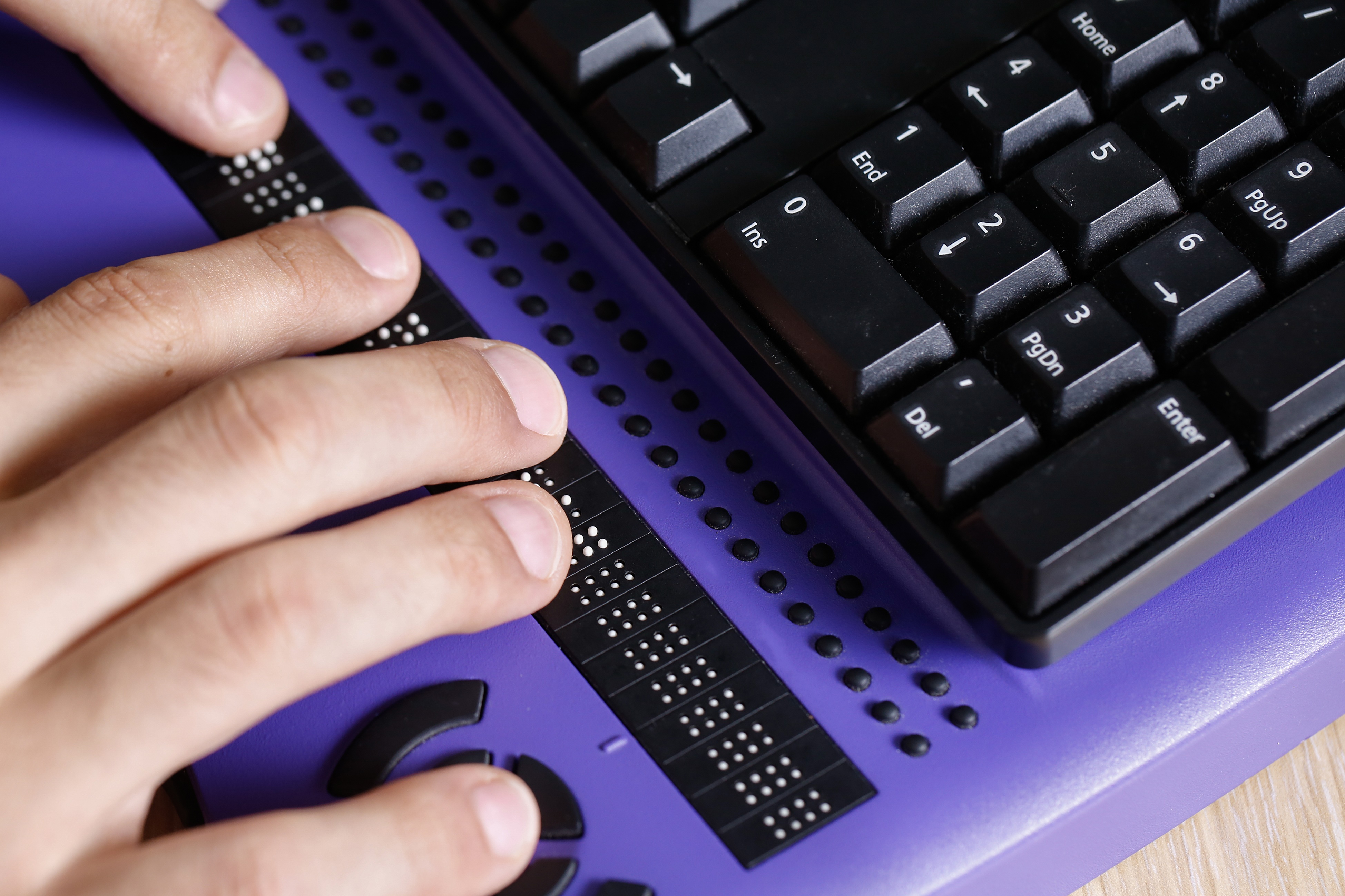Enhancing Lives With Advanced Assistive Instruments for the Blind
The assimilation of advanced assistive tools for the blind is transforming how individuals experience their surroundings and connect with their communities. What does this evolution mean for the future of assistive modern technology and its role in encouraging individuals?
Introduction of Assistive Tools
Assistive gadgets for the blind incorporate a varied variety of modern technologies and tools developed to improve freedom and improve the top quality of life for people with aesthetic disabilities. These devices satisfy various requirements, from navigating and flexibility to communication and day-to-day task monitoring.
One of the primary classifications of assistive devices includes movement aids, such as white canes and guide pet dogs, which aid individuals browse their surroundings safely. Electronic travel aids, equipped with sensors and audio feedback, also play a significant function in flexibility enhancement.
Furthermore, tools that aid with daily living activities, such as adaptive cooking area devices, Braille tags, and talking watches, encourage individuals to carry out jobs individually. Interaction help, including screen visitors and Braille screens, promote access to information and enable people to involve properly with the digital world.
Furthermore, low-tech options like magnifying glasses and large-print products remain important for numerous customers. Collectively, these assistive tools offer not only as practical devices however likewise as essential enablers of freedom, fostering greater involvement in a world that commonly focuses on sighted experiences. Their integration right into life is crucial for advertising inclusivity and improving general health for those with visual impairments.
Cutting-edge Technologies in operation
Advancement in innovation has actually considerably changed the landscape of devices available for people with aesthetic problems. Among the most significant improvements are smart glasses integrated with augmented reality, which provide real-time navigation assistance and item acknowledgment. These gadgets leverage advanced cams and man-made intelligence to deliver auditory signs, improving the user's spatial understanding and autonomy.
Additionally, mobile applications have arised as effective sources, enabling individuals to recognize money, checked out message out loud, and browse strange environments through verbal instructions. Tools such as Braille screens and refreshable Braille tools proceed to progress, offering seamless connection with smartphones and computers, therefore improving interaction and accessibility to info.
Wearable innovation, consisting of smartwatches equipped with voice-activated features, better encourages users by assisting in fast access to notices and informs without needing visual interaction. Responsive maps and 3D printing are likewise acquiring traction, supplying substantial depictions of areas that help in positioning and wheelchair training.
Jointly, these innovative technologies not just enhance the lives of visually damaged people yet additionally foster better self-reliance, inclusivity, and involvement with the more comprehensive area, consequently reshaping understandings of accessibility. (Braille displays and notetakers)
Individual Stories of Empowerment
Empowerment frequently arises from individual experiences that highlight the transformative impact of modern technology on individuals with visual problems. Take, for example, the tale of Sarah, a young artist that regained her enthusiasm for painting via using a clever cane furnished with challenge detection. This tool not only promoted her movement but instilled a newly found self-confidence, enabling her to navigate public rooms separately and seek her innovative ventures.

These stories emphasize the profound effects that progressed assistive gadgets can carry life. By making it possible for individuals to conquer obstacles, modern technology promotes a feeling of freedom and self-worth. Such empowerment stories function as a testament to the potential of technology, showing exactly how the right devices can significantly boost top quality of life and open doors to new opportunities for those with aesthetic disabilities.
Advantages of Advanced Solutions
How can advanced options basically enhance the lives of people with aesthetic problems? The assimilation of cutting-edge modern technology right into assistive gadgets considerably transforms day-to-day experiences for those affected by vision loss. These advanced options supply unprecedented autonomy, making it possible for users to browse their settings with confidence. Tools such as clever walking sticks geared up with sensors, navigation apps, and wearable technology are same day eye exam and glasses near me designed to provide real-time feedback, enhancing spatial recognition and reducing the risks related to wheelchair.
Additionally, advanced assistive modern technologies cultivate social inclusion by assisting in interaction and communication. Voice-activated tools and apps allow people to accessibility info and engage with their surroundings individually, breaking obstacles that previously impeded their engagement in academic, expert, and social settings.
On top of that, the customization and versatility of these solutions satisfy the varied requirements of customers, thereby enhancing their total high quality of life. Boosted functionality, such as item recognition and text-to-speech capabilities, empowers individuals with aesthetic impairments to do jobs that they might have once discovered testing. Inevitably, advanced assistive technologies not only boost independence and security however additionally advertise dignity and self-respect, permitting users to lead fulfilling lives.
Future Patterns in Assistive Tech
As eyeglasses for round face female technology continues to progress, the landscape of assistive gadgets for the blind is positioned for exceptional innovations that will certainly better improve access and independence. Arising fads in assistive technology suggest a change toward boosted integration of expert system (AI) and artificial intelligence, making it possible for tools to adjust to private customer requires in real-time. These innovations are anticipated to assist in even more instinctive navigating systems that click here to find out more can determine challenges and offer audio responses, substantially enhancing outdoor mobility.
Furthermore, the development of wearable technology, such as wise glasses geared up with augmented reality, will certainly enable users to receive contextual details regarding their surroundings, thereby enriching their spatial awareness. Improvements in haptic innovation guarantee to develop tactile responses tools, enabling customers to perceive details with touch, boosting understanding and communication with their setting.
Telecommunication advancements are additionally paving the method for remote assistance remedies, where skilled specialists can offer advice via video calls, making sure support is conveniently accessible. As these patterns unravel, the future of assistive gadgets for the blind will undoubtedly foster higher autonomy, equipping individuals to navigate their world with confidence and ease.

Verdict
The combination of sophisticated assistive devices for the blind stands for a considerable improvement in fostering self-reliance and improving quality of life. By using cutting-edge modern technologies, these gadgets empower individuals to browse their environments with higher self-confidence and freedom. As the area remains to progress, continuous research and development will likely generate much more sophisticated options, further transforming the lived experiences of individuals with aesthetic problems and advertising a greater sense of inclusion within culture.
The assimilation of advanced assistive tools for the blind is transforming exactly how individuals experience their environments and engage with their neighborhoods. The integration of sophisticated modern technology into assistive devices considerably changes day-to-day experiences for those affected by vision loss.As modern technology continues to progress, the landscape of assistive tools for the blind is positioned for remarkable innovations that will even more improve availability and freedom. Emerging trends in assistive technology indicate a change towards increased integration of man-made intelligence (AI) and machine understanding, making it possible for tools to adjust to specific customer requires in real-time.The combination of sophisticated assistive gadgets for the blind stands for a significant advancement in fostering freedom and improving quality of life.